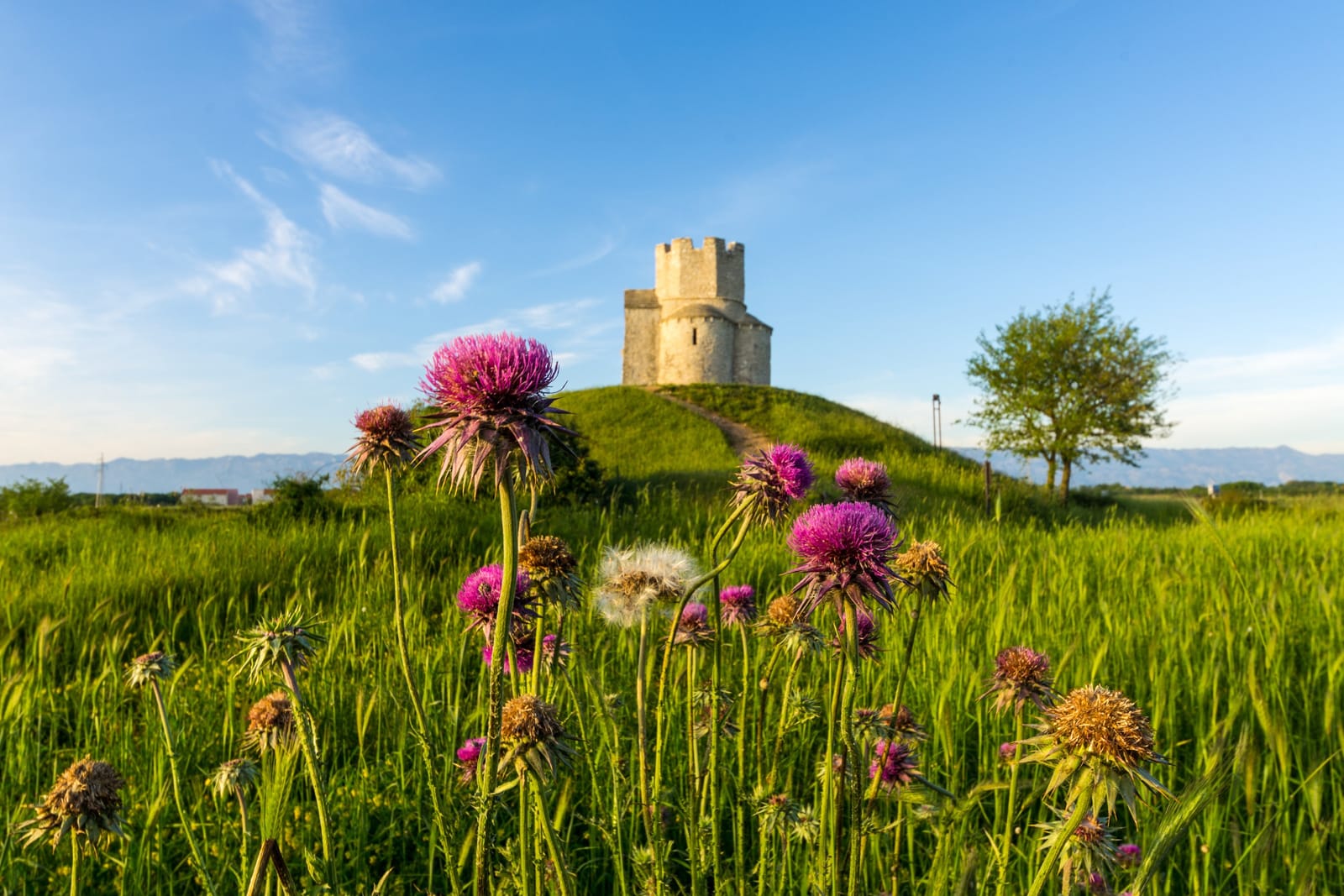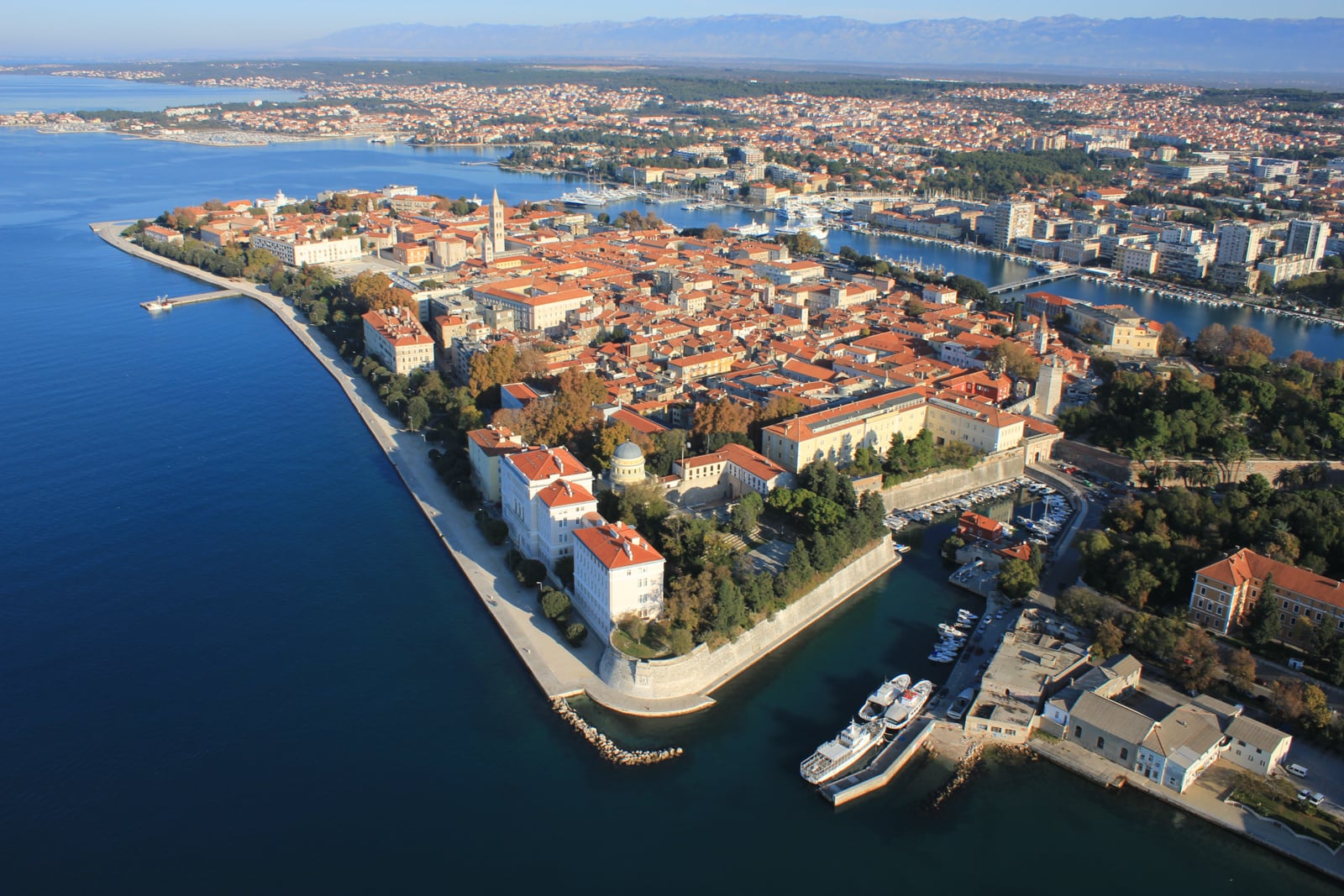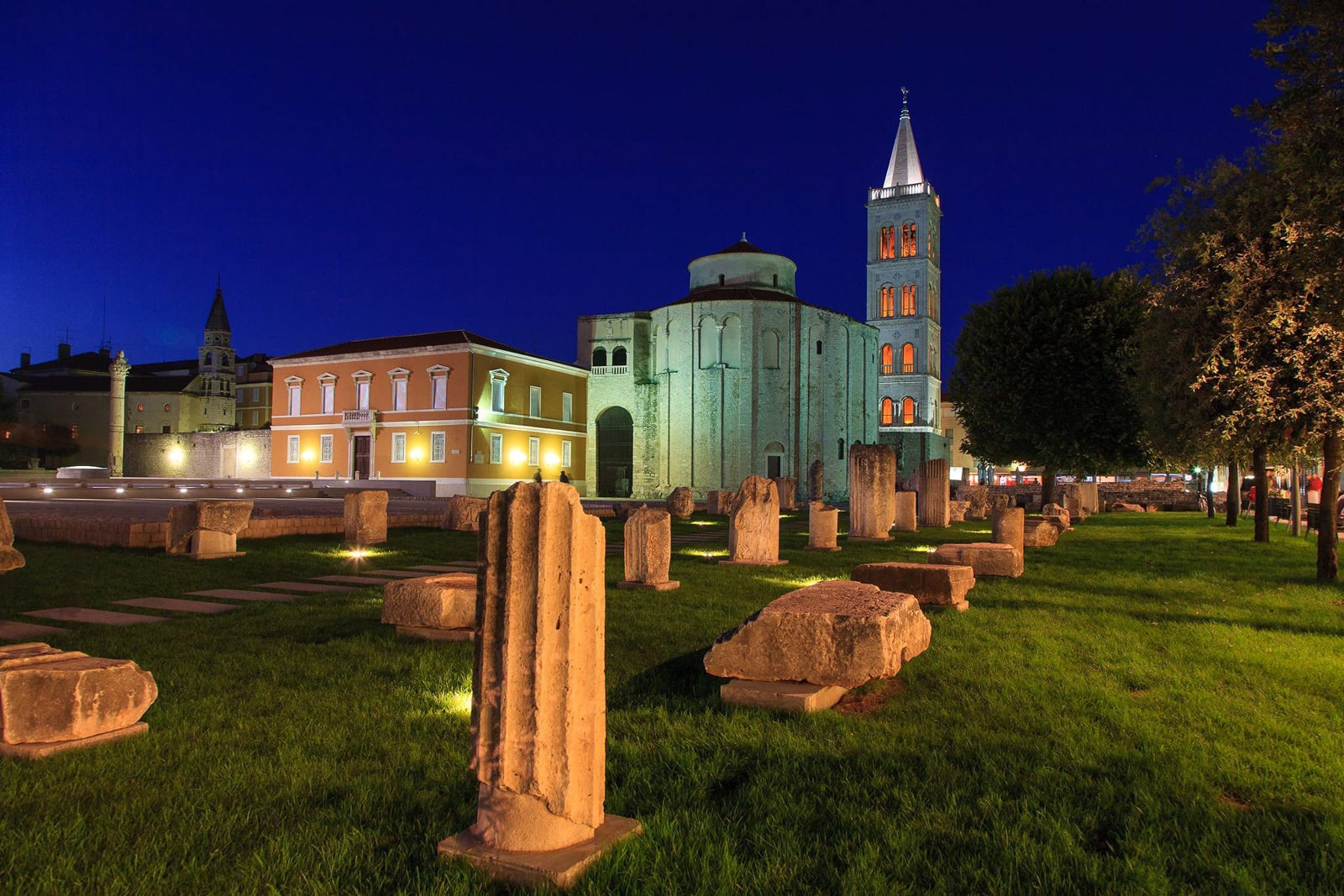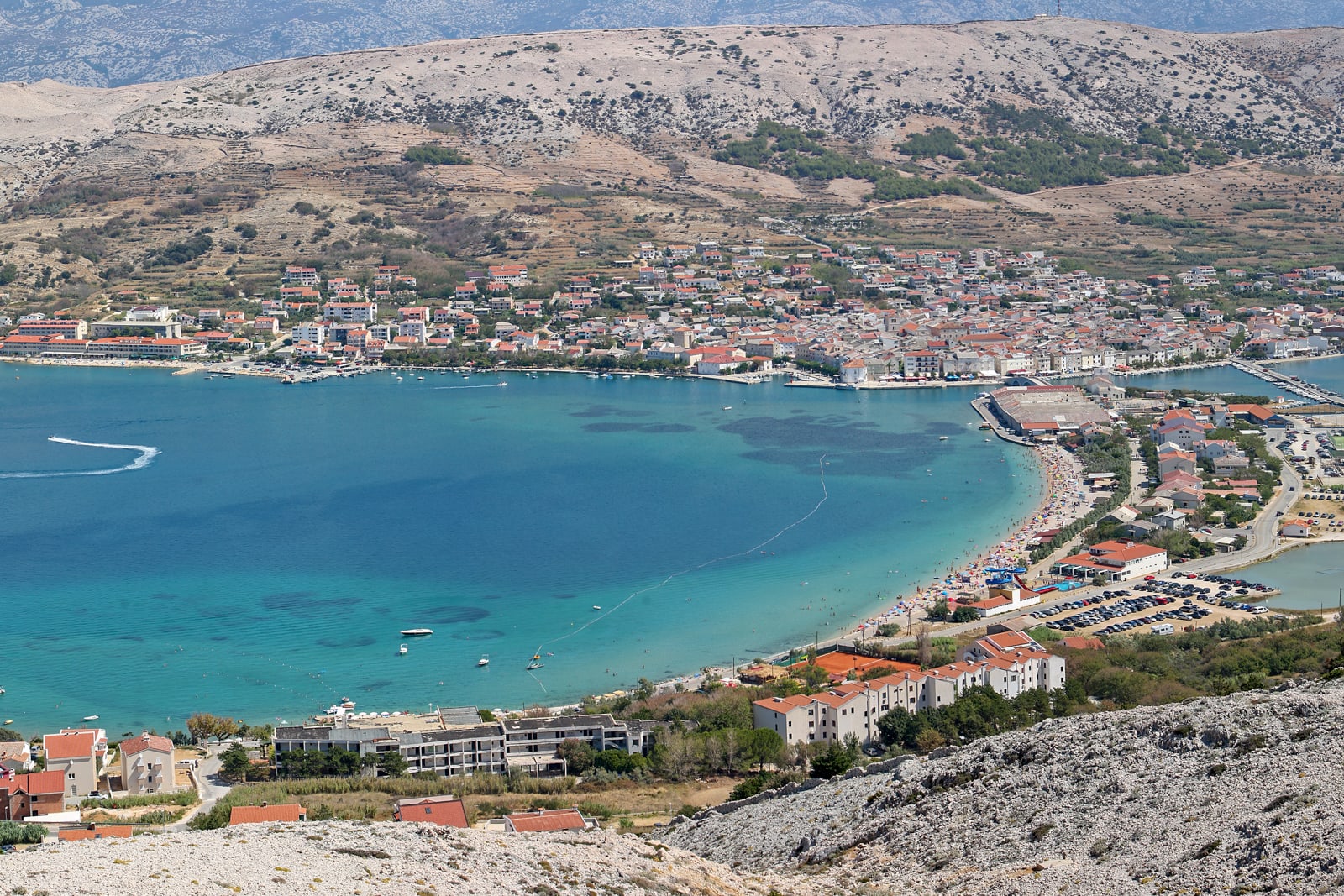Descrizione del tour
Zadar City tour starts in the old city core at the main market within the city walls, and continues to the main palaces from the Venecian period at a beautiful Narodni trg (People’s Square). Follows a visit to the Four Wells Square, Church of St. Simeon and Petar Zoranić Square with excavated remnants of the Roman city gates. Along Kalelarga you continue to the main city square Forum and a round medieval church, St. Donat, after which a 30-minute break is planned among remnants of the Roman plastic art. After the break you continue to the Cathedral of St. Anastasia and the Three Wells Square with the remnants of the Roman tower and port, and visit the Monastery of St. Francis, after which you reach two architectural art installations Greeting to the Sun and Sea Organs, which driven by the sea waves plays 7 chords of 5 tones. The excursion ends with the visit to the Church of St. Chrysogonus.
The town of Nin is proud of the fact that it has been continuously inhabited for an impressive 3000 years. It is located on an islet in a small sandy lagoon, and is connected to the mainland by two centuries-old stone bridges. The Illyrian tribe of Liburnians strongly marked the development of Nin in the period from the 9th to the 1st century BC. This is evident from the fact that Nin is the site with the biggest number of Liburnian tombs and the largest amount of material remains which help to understand the entire development of Liburnian culture.One of the symbols of Nin is the Coronation Church of St. Nicholas, located on a prehistoric hill. According to folklore, seven kings were crowned in Nin, and on that occasion the crowned ruler would ride to the church of St. Nicholas, introduced himself to the people and cut with a sword to all four corners of the world.
Town of Pag tour starts in the old town. The original architecture, the work of Juraj Dalmatinac, a famous Croatian architect and sculptor, dates back to the mid-15th century. The programme includes a tour of the Collegiate Church of St Mary’s Assumption, and the Duke’s palace, a cultural heritage property which, following its restoration, has been serving as a venue for theatrical performances. We proceed to the Salt Works Museum, where visitors can observe the tools and devices used in manufacturing and transporting salt. The visit to the museum is followed by a tour of The Gallery of Pag Lace, dedicated to the world-famous lacework inscribed on the UNESCO’s list of intangible cultural heritage in 2009. Traditional Pag lacework has been an integral part of the life on the island, symbolizing both the beauty and the hardship of life on this island of rocks and salt.
Pag cheese is an autochtonous product which compares favourably with the world’s most famous cheeses. Its rich and flavourful taste is a result of the island’s stone and salt, medicinal and aromatic herbs as well as of the tradition of the island of Pag. Enjoy in our guided tour of the Gligora cheese factory, lasting for 25 minutes with mini tasting of 6 types of cheese.


















